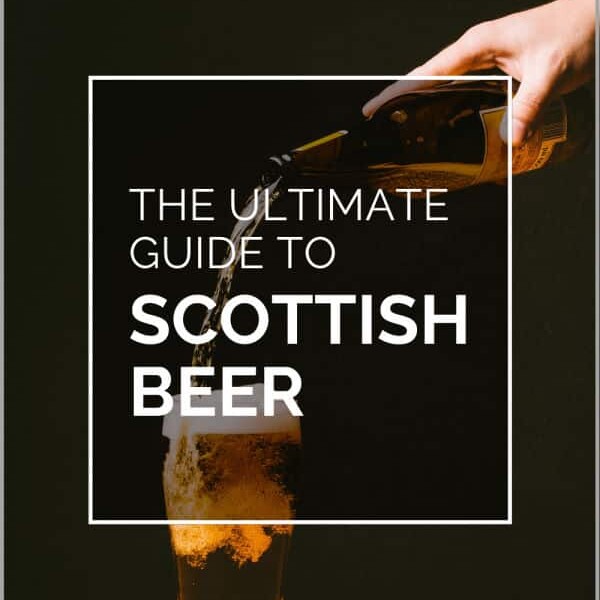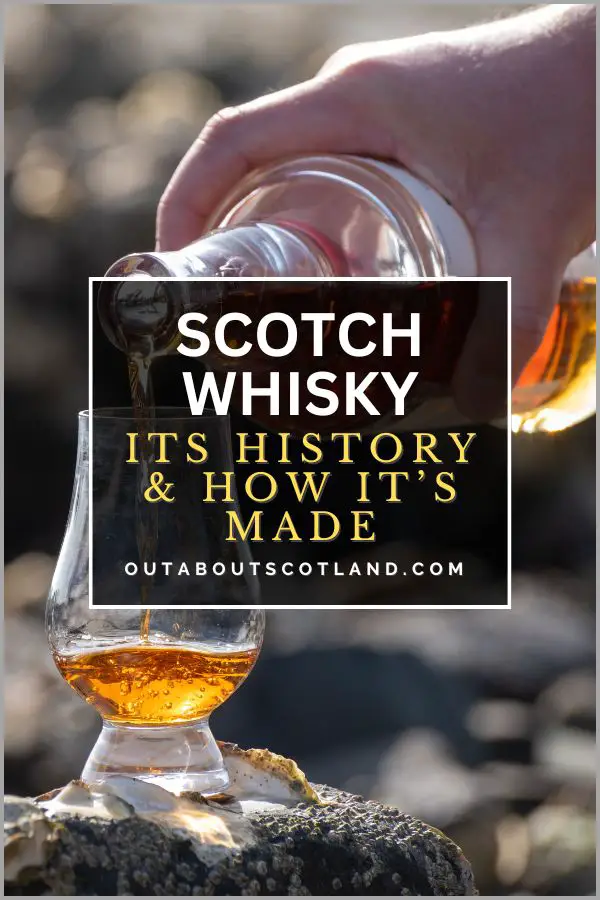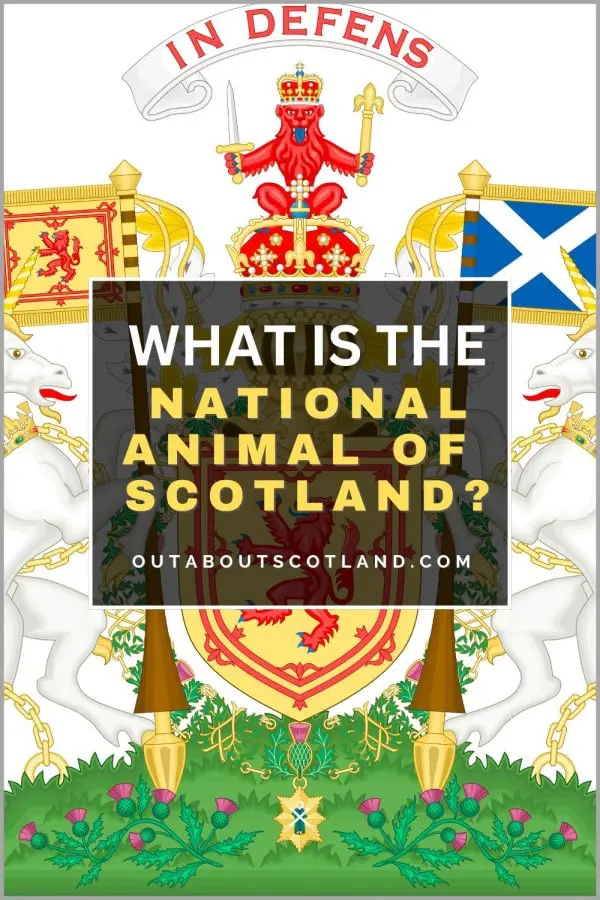Scotland is currently in a beer-brewing renaissance with craft breweries like Aberdeenshire’s Brewdog and Edinburgh’s Innis and Gunn frequently celebrated at major Scottish beer festivals like the Alba Real Ale festival and Fynefest.
Discover everything you need to know about the top Scottish beers & festivals in this complete guide which includes facts about the history of Scottish beer, how it’s made, and the highest-rated Scottish beers currently available.
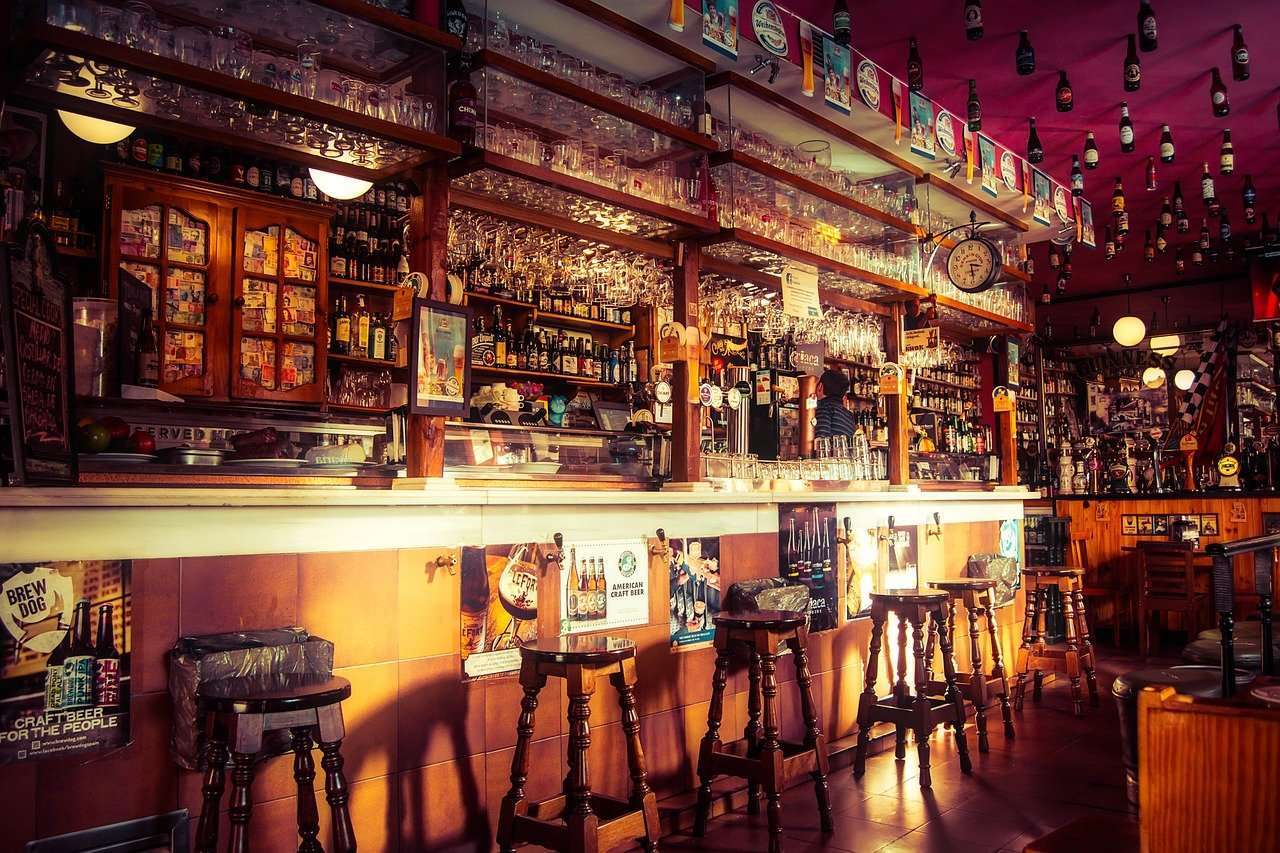
The Best Scottish Beer Brands
Historically, the majority of Scottish breweries developed in the central Lowlands, with Edinburgh regarded as one of Britain’s biggest exporters of beer around the world, though Glasgow comes close thanks to the output of the giant Tennent’s brewery.
The peak of Scottish brewing is acknowledged as the early 1840s when an impressive 280 breweries were operating, but this number sadly declined as the smaller operations either merged or went out of business. By 1970 there were just 11 breweries left in Scotland, and it was an ongoing joke that if you wanted a pint in your local pub your choices were either Tennents, McEwans… or Tennents.
Thankfully that number is slowly reversing due to the number of microbreweries that are springing up and to date there are over one hundred legal breweries in Scotland producing world-class beer.
Stewart Brewing
Founded in 2004 by two entrepreneurs, Stewart Brewing quickly grew to become one of the best microbreweries in Scotland.
From the starting lineup of three cask ales, they now produce a wide range of beers in bottles, cans and kegs and are one of the few UK breweries that offer a brew-it-yourself craft beer kitchen. They also feature two brewery tours where you’ll get to see the operation and learn about the brewing process, accompanied by a pint or two of Stewart Brewing’s best ales.
- Session IPA. Alc 3.7% vol. Pale in colour with strong citrus and fruity aromas. It’s a light and crisp beer that’s perfect for summer BBQs but also goes well with seafood and salads.
- Radical Road. Alc 6.4% vol. Golden with a long foam, this beer bursts with hops, pine and grapefruit. Medium-bodied with a long-lasting smooth bitterness.
- Edinburgh Gold. Alc 4.8% vol. A golden ale that has a strong hop aroma mixed with notes of caramel. The light-bodied taste has a moderate amount of bitterness that works well with spicy curry.
Brewdog
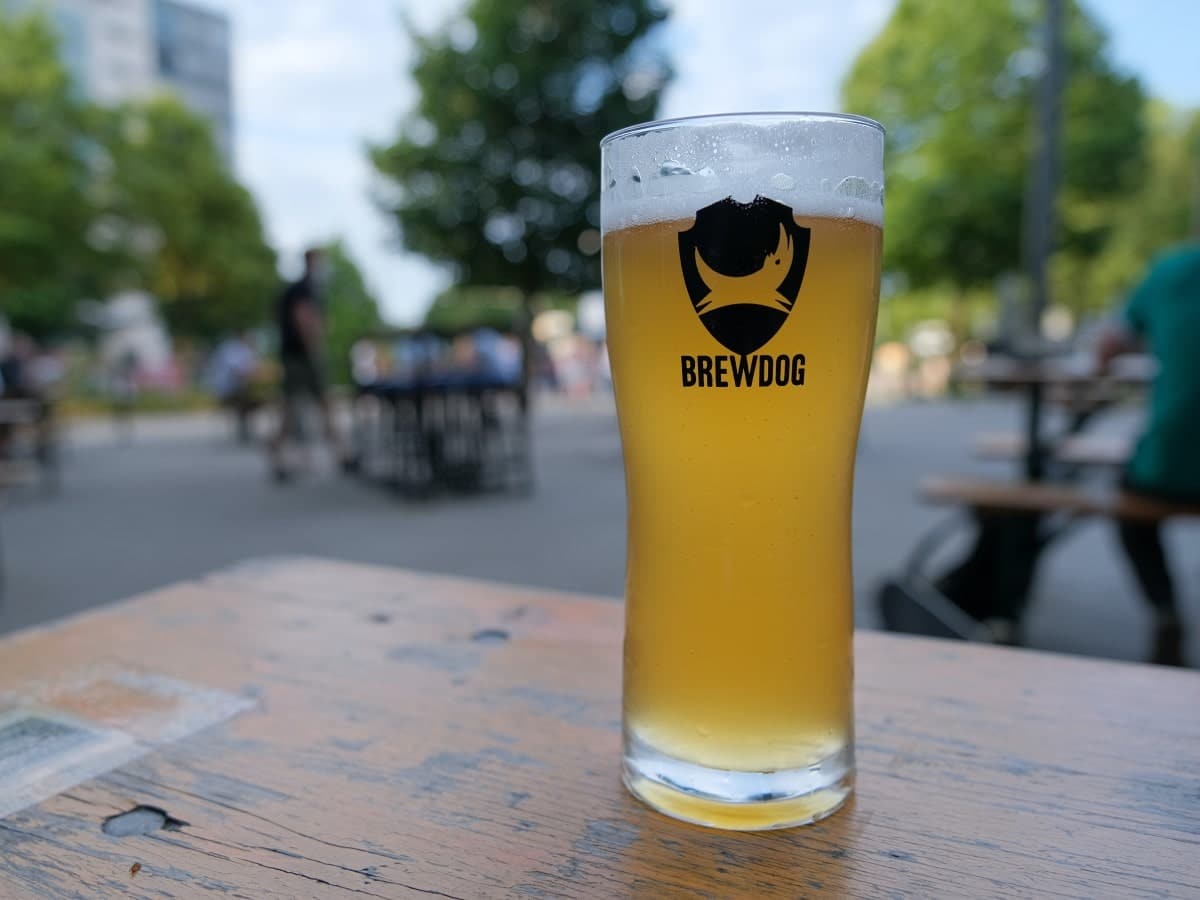
The world’s first-ever crowd-funded brewery was set up in Aberdeenshire by two friends in 2008. Since then they’ve gone on to take the world of craft beers by storm and they now have 50 bars in the UK and 24 international bars, with plans to introduce more in the US.
The company is well known for its aggressive marketing tactics which include a 32% alcohol beer (bizarrely named ‘Tactical Nuclear Penguin’) that was claimed to be the world’s strongest, followed by a 55% beer liquor packaged inside stuffed animals!
Brewdog is the most famous Scottish beer for craft beer lovers but its retail sales of £37 million pale in comparison to Tenents lager which is in excess of £350 million annually.
- Punk IPA. Alc 5.6% vol. This is the beer that started it all and it was the first brew produced by the fledgeling company at their premises on an Aberdeenshire industrial estate. It’s a light, golden ale full of strong hoppy flavours with notes of grapefruit, pineapple and lychee.
- Dead Pony Club. Alc 3.8%. Aromas of citrus, lemongrass and lime with tropical fruit and spicy undertones, this beer is easy-drinking perfection.
- Indie. Alc 4.2% vol. A pale ale craft beer with notes of pear and banana, with sweet caramel finishing on the back of your tongue. It has a very mild bitterness that makes it great to drink at any time of the year, whether it’s a summer BBQ or a winter slurp by the fireside.
Tempest Brewing Co.
Based in the heart of the Scottish Borders, Tempest Brewing has won a slew of industry awards which is surprising for such a small outfit. In 2016 they won the Scottish Brewery of the Year award and they were featured in the Ratebeer Top 100 Breweries in the World in both 2017 and 2018. Not bad for a small outfit that only started its business in 2010.
Their attitude to the final product is what sets Tempest apart and many of their beers have been created around a single theme, like their fantastic Mexicake brew that’s designed around the idea of a Mexican chocolate cake!
- Mexicake. Alc 11% vol. This delicious ale won gold at the Aldi Scottish beer awards in 2016 and it’s not hard to see (or taste) why. It has bottom notes of thick, dark stouts infused with sweet cinnamon, vanilla, cocoa and chilli that work incredibly well together. Just watch out because the 11% alcohol content packs one hell of a punch.
- Long White Cloud. Alc 5.4% vol. The hops used in this beer are from New Zealand, hence the name. There’s a definite fruity aroma to this pale ale with lots of pineapple and citrus zest on the palate, which makes it a great accompaniment to a summer BBQ.
- Modern Helles. Alc 4.1% vol. Another award winner, this time at the Scottish Beer Awards 2017 where it came first in the title of best lager. It’s very easy to drink with a malty, citrusy flavour like the best Bavarian-style lagers and it works very well with seafood and pasta.

Drygate Brewing Co.
The only micro-brewery in the historic heart of Glasgow and also one of the newest operations in Scotland, having only opened for business in 2014. In the years since they’ve gained a name not only for the quality of their ales but also for their in-house brewing studio that allows anyone to design their own beer – from the label to the style – in a single day.
Brew days are run in groups of up to six people and you even get to take the beer home with you at the end. Genius idea!
- Seven Peaks. Alc 5.0% vol. This aromatic IPA is the company’s flagship beer and is available in cans and on tap. Crisp in flavour with a sweet aftertaste, it goes well with fish and spicy sausage.
- Close Quarters. Alc 11.2% vol. Yes, you read that correctly. This beer has around the same alcohol content as a bottle of wine, but it tastes absolutely delicious. It’s barrel-aged in oak casks for five months before bottling which infuses flavours of fruitcake and chocolate into it, with hints of vanilla and coconut.
- Chimera. Alc 5.9% vol. A very high-quality India pale lager that’s light, crisp and easily drinkable – possibly too drinkable considering it weighs in at nearly 6% alcohol content. Available in cans but soon moving to draught only, this beer deserves a sample if you’re lucky enough to find it in a Scottish boozer.
Isle of Arran Brewery
Arran is popular with hillwalkers and holidaymakers thanks to its stunning scenery and wide range of tourist attractions. But now there’s another reason for people to fall in love with Arran and it’s the amazing small-batch beers this brewery near the village of Brodick produces.
The founders have turned the business around since entering administration in 2008 and are now known for the high quality of their ales – many of which have won industry awards like the Great Taste of Britain Award in 2015.
- Isle of Arran Blonde Premium. Alc 5% vol. Blonde Premium is incredibly fresh with a zesty, citrusy taste that finishes with a surprising amount of sweetness. Perfect for summer afternoons in the garden.
- Isle of Arran Dark. Alc 4.3% vol. This dark, thick beer has rich caramel notes and fruity flavours mixed with sweet chocolate undertones. It’s not too strong either at 4.3% so it’s easy to sink a couple of bottles on a winter afternoon and it goes really well with dark meats if you’re looking for a drink to complement your meal. Try it with game pie – it’s fantastic.
- Sleeping Warrior. Alc 8.3% vol. This beer is known as a barley wine which is a traditional alcoholic drink that used to be reserved for the aristocracy, but thankfully times have changed and now anyone can try this delicious ale. The brewery recommends letting the beer mature in the bottle for up to four years before drinking, at which time you’ll be rewarded with a rich, fruity drink that has hints of warm ginger.
- 100% Scottish malt and finest English hops in perfect balance in this fantastic beer from the famous Belhaven Brewery.
- Smooth, rich and nutty a classically crafted Scottish Ale.
- The ale we've been brewing longest of all, and our best-selling bottled ale worldwide
- 5.2% abv
The Best Scottish Beer Festivals
There are loads of beer festivals happening throughout Scotland from January to December and it wouldn’t be feasible to include them all in this article, so I’ve included a few of my favourites below. If you want to find others I recommend checking out The List website which has a constantly updated list of Scotland’s beer festivals along with dates, times and entry prices.
Fynefest
Held at the end of May to the beginning of June at the Fyne Ales brewery estate in Argyll where it bills itself as the Scottish beer event of the year – and with good reason. Fynefest is one of the largest beer festivals in the country that also celebrates Scotland’s connections with great food, lively music and first-class beer, and it’s a genuine family-friendly experience.
2019 was the best festival yet where three stages were set up to showcase more than twenty music acts alongside food market stalls from eleven local and award-winning producers.
Alba Real Ale Festival
The Alba Real Ale Festival is held in the last week of August near Dundee where it has been growing from strength to strength in the last 10 years. This is one of the smaller festivals with expected visitor numbers in the 1000-2000 region, but that’s really part of its charm. It’s not too big and commercialized and it’s small enough to maintain a warm and friendly atmosphere.
The focus at the Alba Real Ale Festival is on small breweries and they always ensure they have plentiful supplies of the cream of the (beer) crop, as well as quality selections of cider, wine and spirits. Children are welcome at the festival too (they even get free entry) so you won’t have to arrange child-minders while you’re enjoying the event, and there are plenty of food stalls so you won’t have to worry about cooking either.
Live music is catered for with 10 bands on the soundstage covering everything from reggae, blues, rock and indie, but if your children aren’t interested in live music you can always pop them in front of the magic acts instead.
Edinburgh’s Craft Beer Experience Festival
This festival has to be in this list for two reasons. First, it’s hosted in my home city in one of my favourite buildings (the Assembly Roxy) and second, it’s a real beer connoisseur’s event that cuts out most of the unnecessary festival fluff and just offers great craft beer instead.
The event is held from the end of October to the beginning of November over five sessions with more than 20 breweries showcasing their best products. Don’t worry if all that ale makes you hungry because there are plenty of street food vendors on the site, plus a selection of Scottish cider and whisky producers if you fancy trying something a bit different to all that beer.
The festival is held across three floors of the beautiful former church in the heart of the Old Town with the main hall hosting Scottish breweries, the downstairs Snug Bar featuring ales from the rest of the UK, and the upstairs Upper Theatre Room featuring a selection of European breweries.
The festival also has a lineup of masterclasses if you want to hone your tasting knowledge as well as expert-led beer and food pairings if you want to learn which foods go best with which ale.
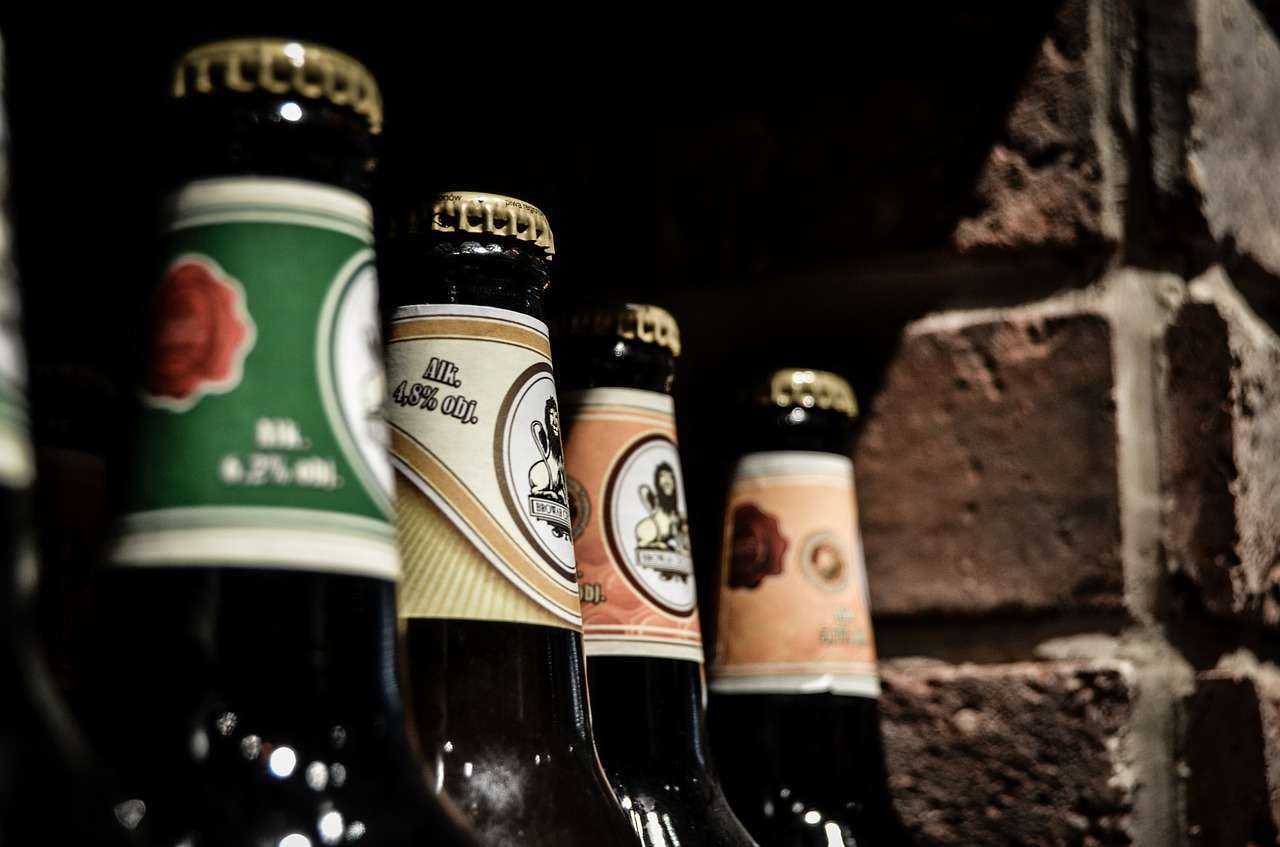
The History of Scottish Beer – Ale and Lager
The history of brewing ale in Scotland stretches back further in time than you might imagine. In fact, it is known that the people of Skara Brae in Orkney were producing beer as early as 3,000 BC. That’s 5,000 years of beer-making history under Scotland’s belt! No wonder they know how to make such a good pint.
Those first Neolithic brewers used barley as the primary ingredient along with a selection of bittering herbs like heather, myrtle and broom – all readily available plants that can still be found throughout Scotland’s wilderness today.
Obviously, no samples from those first days of Scotland’s brewing heritage survive, but records show that the pungent brews were flavoured with meadowsweet (another common Scottish plant) which can still be found in damp meadows throughout Britain.
This method of beer making was likely brought south by the Picts who had developed a herb mixture for brewing called gruit sometime in the late Iron Age, long before the modern preference for using hops had ever been thought of.
Beer became one of the most common beverages during the Middle Ages and was drunk daily by all classes, not because it was a social thing to do but because it was a healthy thing to do. Yep, back then, drinking beer was considered healthier than drinking water!
That makes sense once you look at the quality of water our medieval ancestors would have had to put up with. Dirty, polluted water raised from a well would no doubt be full of parasites and diseases which would have been downright dangerous to drink in an age when medical care was virtually non-existent.
Beer, on the other hand, was made with boiled water which meant that all the bugs and beasties in the ingredients were killed off, leaving a bacteria-free liquid that maintained its sterility thanks to the alcohol it contained. It’s known that even children drank beer back then, though what their alcoholism rate was like I can only imagine, but at least the medieval authorities made sure the product was kept at a consistently good quality.
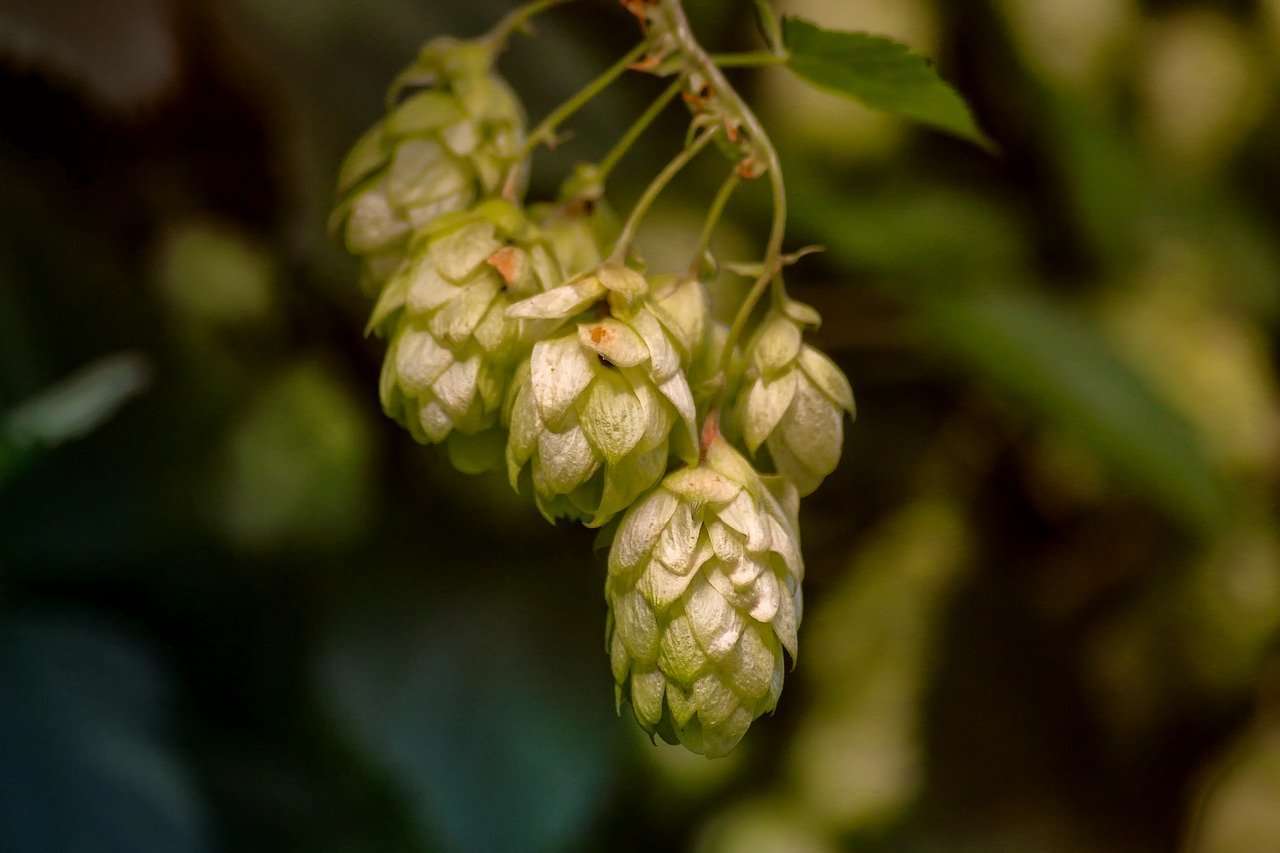
Because so much beer was needed (each person consumed around 60 gallons per year) most large premises brewed their own, especially in priories and castles where entire breweries were created to keep stock levels permanently full.
As demands for the beverage increased so did the skills of the brewers who gradually formed themselves into trade bodies like the Edinburgh Society of Brewers which was established back in 1598.
These guilds ensured the ale was made to a consistently high quality and they were soon able to build their own breweries to produce ever-increasing quantities of ale. That, in turn, led to the creation of the first roadside taverns and inns that were able to buy from the guilds and then re-sell at a profit to passing thirsty travellers.
When the Acts of Union was passed in 1707, taxes were introduced on beer that was much lower in Scotland than in England meaning Scottish Breweries were able to cheaply produce vast quantities at an enormous profit. This led to some of the biggest breweries in the world being established, including Glasgow’s Tennent and Dunbar’s Belhaven breweries – both of which are still going strong today.
We don’t know exactly when hops were introduced to the beer-making process but author Thomas Pennant wrote in 1769 that the residents of Islay were skilled in making ale from heath plants and ‘sometimes adding hops’, although the use of bittering herbs was still prevalent across the rest of Caledonia at that time.
By the end of the 19th century, hops had completely replaced the ancient use of herbs, though the actual process of making beer remained pretty much unchanged until the 1900s.
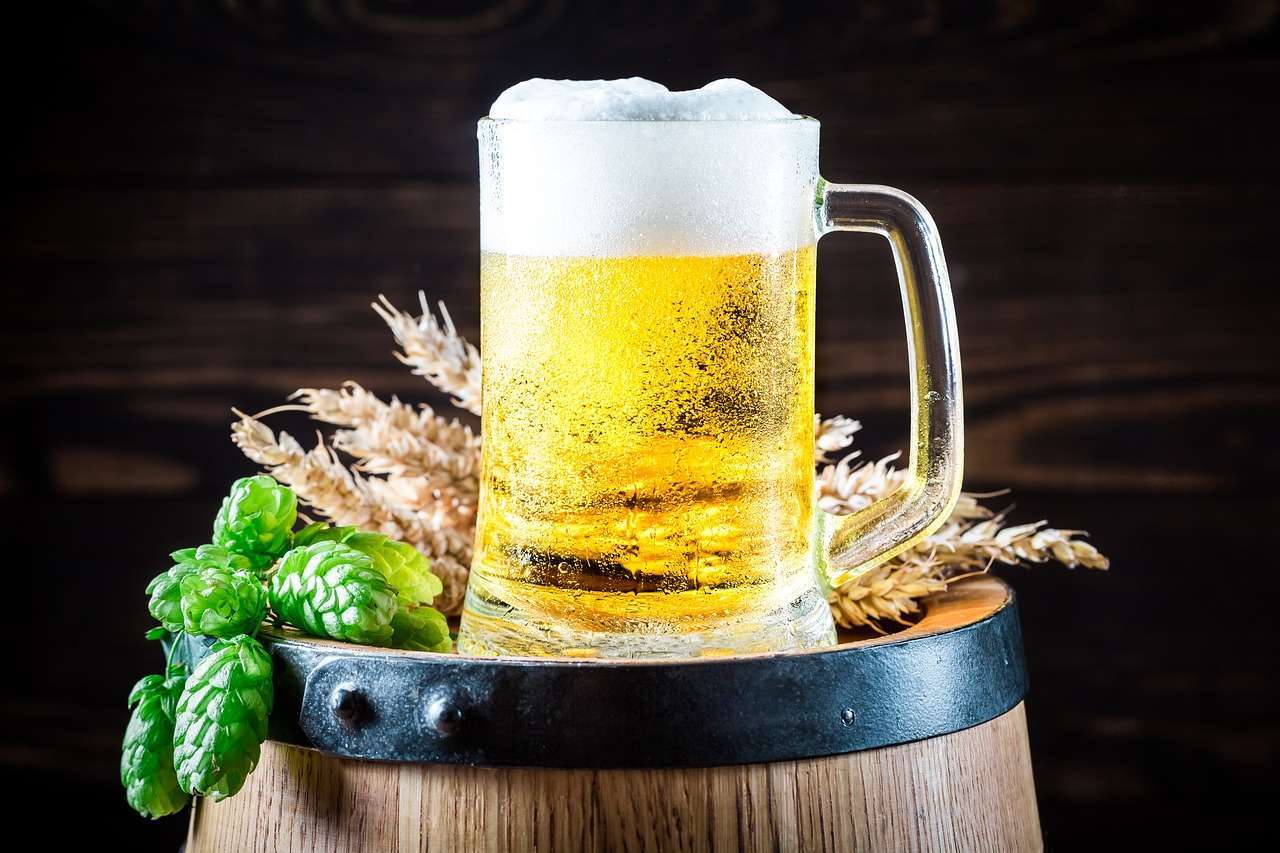
Following the Second World War, England was under pressure to increase taxation on beer which in turn led to lower strength – but cheaper – ales. While these beverages were readily drunk down south the Scottish weren’t so keen, and so old stalwarts like English porter eventually disappeared from Scotland’s pubs for good.
Another major change occurred in the 1970s when German lager rapidly established itself as Scotland’s favourite type of beer. The growth of lager was phenomenal, increasing market share from under 2% in 1965 to over 20% just ten years later – the greatest shift in the industry since hops were introduced more than two hundred years earlier.
Recent years have seen another shift in Scottish beer-drinking circles with the rise of micro-breweries and craft ales inspired by American craft brewers. These tiny breweries can adapt and change quickly to the Scottish consumer’s changing tastes and many people agree that Scotland is in a new brewing renaissance.
The torch for real ale is now being carried by major new success stories like the previously mentioned Aberdeenshire Brewdog and Edinburgh Innis and Gunn. Whatever new developments are around the corner for Scotland’s beer industry is anyone’s guess, but I think it’s safe to say the country will keep its love affair with the brew for many years to come.
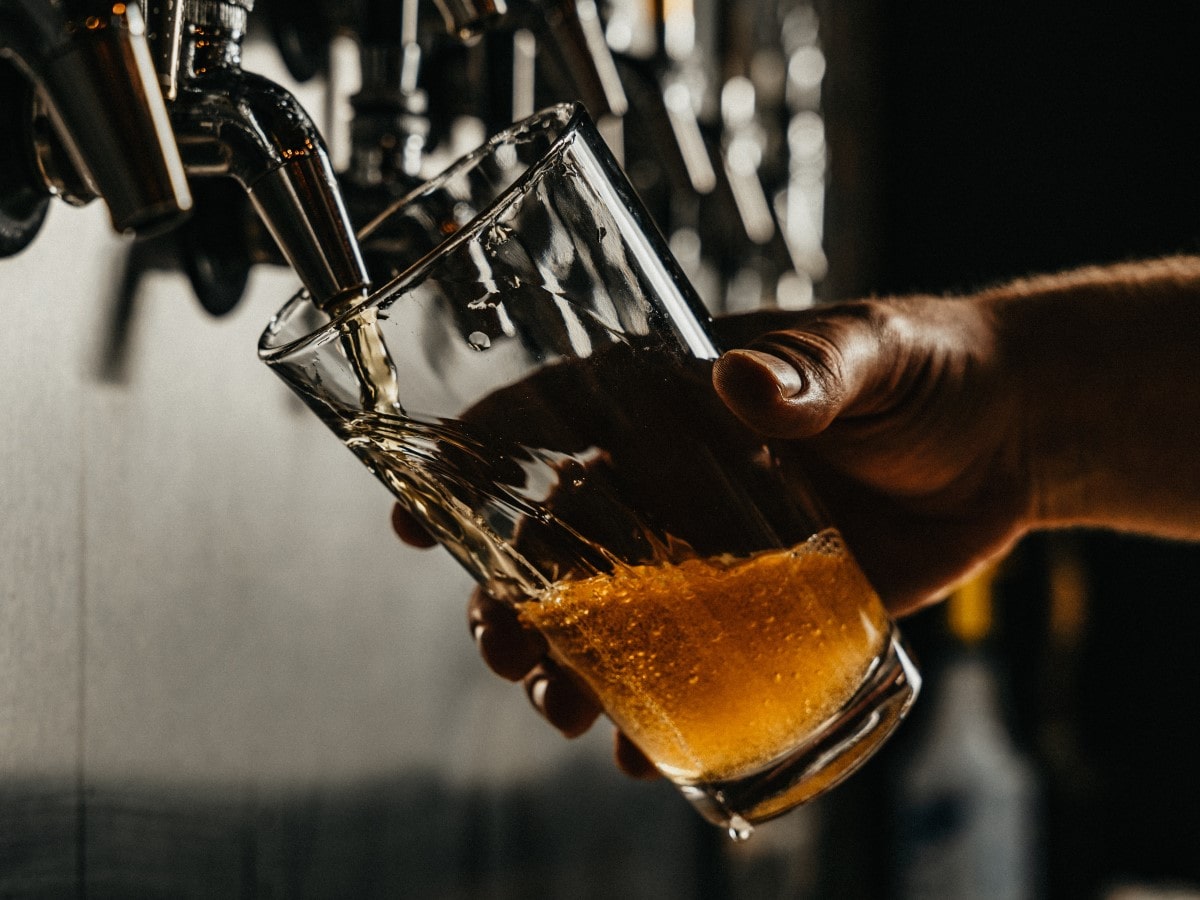
How Is Scottish Beer Made?
Although there have undoubtedly been significant improvements since the first times when the earliest European tribes threw random grains and herbs into a pot, the process of making beer has remained essentially unchanged for thousands of years.
These days everything is ultra-sterilised and efficient, but the five basic steps of malting, mashing, boiling, fermenting and bottling are the same as ever, though the process differs slightly between the breweries – much like whisky production is different between distilleries.
- Malting. Every beer contains some type of grain and while barley is the most popular many breweries also use wheat and rye. Just like in whisky distilling, this first stage dries out the grains in a heating process that cracks them open, ensuring they’re ready for the mashing stage.
- Mashing. This step involves steeping the grains in hot water which activates the enzymes locked inside each one. As the water heats up, the sugars inside the grain are released. Then, after a couple of hours, the grains are sieved out and the sugary water is used in the next step.
- Boiling. The sugary water – known as wort – is now boiled and hops and herbs are added to flavour the mixture. This stage normally takes about an hour.
- Fermentation. Next, we have to take the flavoured extract and ferment it to produce alcohol. To enable this, yeast is added which reacts with the sugar in the wort. This step takes a few weeks during which the mixture is tested several times until the correct level of alcohol has been achieved.
- Bottling and ageing. As of right now, the beer is in bottles and either artificially or naturally carbonated using the CO2 that the yeast produces. Ageing takes anywhere between a few weeks and a few months, as opposed to whisky, which takes a minimum of three years.
Frequently Asked Questions
What are the best independent breweries in Scotland?
Stewart Brewing produces a wide range of beers in bottles, cans, and kegs and is one of the few UK breweries that offer a brew-it-yourself craft beer kitchen.
Brewdog is the world’s first-ever crowd-funded brewery having been set up in Aberdeenshire by two friends in 2008.
Tempest Brewing is based in the heart of the Scottish Borders and has won a slew of industry awards.
Drygate Brewing is the only micro-brewery in the historic heart of Glasgow and is also one of the newest brewery operations in Scotland.
Which are the best Scottish beer festivals?
Fynefest is held from the end of May to the beginning of June at the Fyne Ales brewery estate in Argyll.
Alba Real Ale Festival runs in the last week of August near Dundee.
Edinburgh’s Craft Beer Experience Festival is held from the end of October to the beginning of November.
What are the stages of beer making?
1. Malting dries out the grains in a heating process.
2. Mashing involves steeping the grains in hot water.
3. Boiling adds hops and herbs to flavour the mixture.
4. Fermentation takes the flavoured extract and ferments it to produce alcohol.
5. Bottling & ageing the beer either carbonates it artificially or naturally using the CO2 produced by the yeast.
Where is Scottish beer made?
The majority of Scottish breweries are in the central Lowlands, with Edinburgh regarded as one of Britain’s biggest exporters of beer around the world – though Glasgow comes close thanks to the output of the giant Tennent’s brewery.
What is Scotland’s most popular beer?
Scotland’s most popular beer is Tennent’s lager which has been brewed since 1885 and has sales of over £350 million each year.

